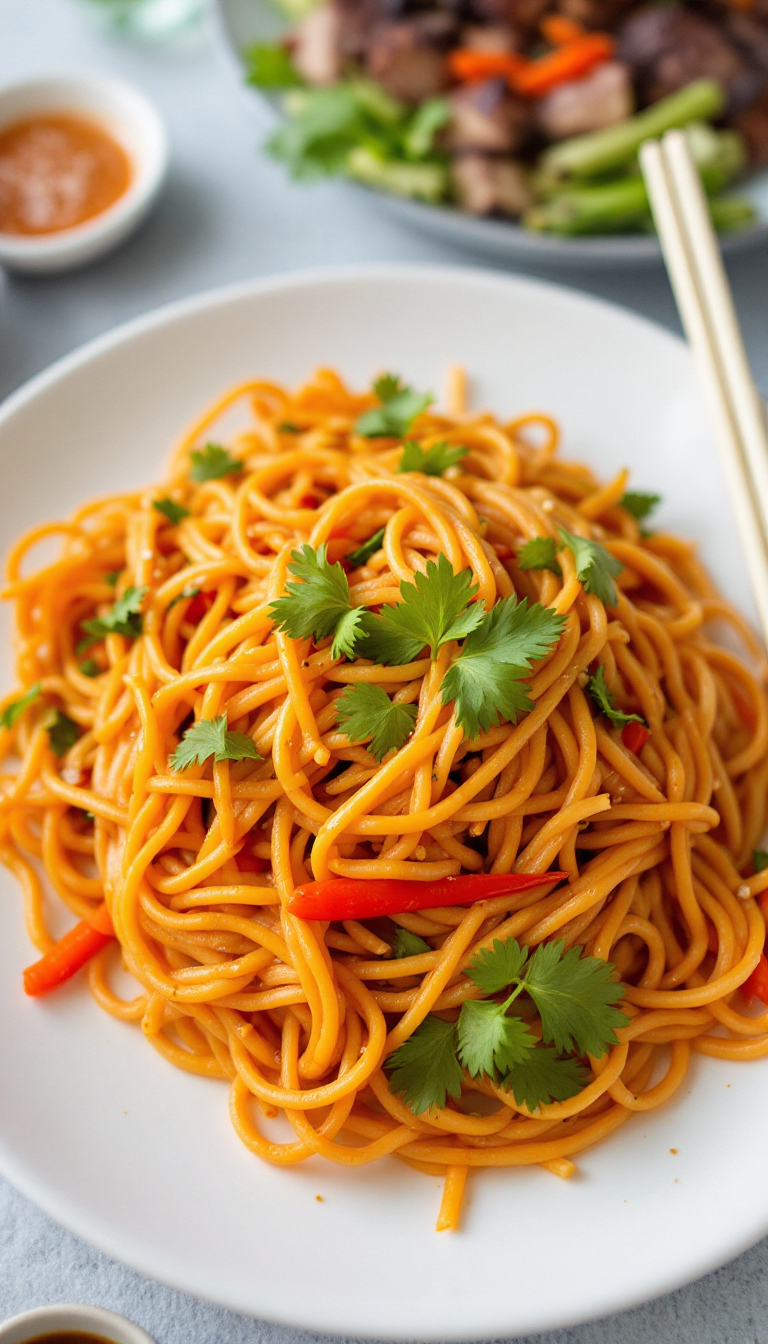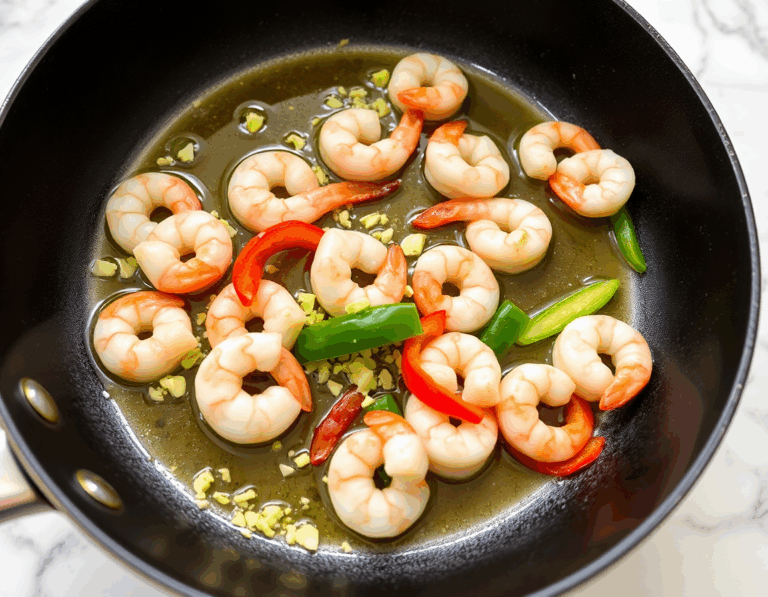Ah, Pad Thai—my go-to comfort food when I need something that both warms the soul and tingles the taste buds. It’s like a symphony of flavors, where the tangy tamarind, crunchy peanuts, and silky noodles come together in perfect harmony. Last week, while binge-watching the latest season of that cooking show everyone’s been talking about, I was inspired to whip up this easy, authentic recipe that takes me back to that little street vendor in Bangkok—minus the jet lag!
Steps
- Prepare the rice noodles by cooking them according to the package instructions until they are just tender. Rinse them under cold water to stop further cooking.
- In a bowl, mix together the ingredients for the sauce: fish sauce, soy sauce, brown sugar, rice vinegar (or tamarind paste), Sriracha, and peanut butter if using. Set the sauce aside for later use.
- Heat 1½ tablespoons of oil in a large pan over medium-high heat. Add your choice of shrimp, chicken, or tofu, along with minced garlic and sliced bell pepper. Cook until the protein is fully cooked, ensuring the shrimp turns pink or the chicken is no longer pink inside.
- Move everything to one side of the pan and add a bit more oil. Pour in the beaten eggs and scramble them, breaking them into small pieces as they cook.
- Add the cooked noodles, prepared sauce, bean sprouts, and peanuts to the pan, keeping some peanuts aside for garnishing. Mix everything thoroughly to combine all the flavors.
- Serve the Pad Thai hot, garnished with chopped green onions, extra peanuts, fresh cilantro, and lime wedges. Enjoy immediately for the best taste.
Ingredients
- 8 ounces flat rice noodles
- 3 tablespoons oil
- 3 cloves garlic, minced
- 8 ounces uncooked shrimp, chicken, or extra-firm tofu, cut into small pieces
- 2 eggs
- 1 cup fresh bean sprouts
- 1 red bell pepper, thinly sliced
- 3 green onions, chopped
- 1/2 cup dry roasted peanuts
- 2 limes
- 1/2 cup fresh cilantro, chopped
- 3 tablespoons fish sauce
- 1 tablespoon low-sodium soy sauce
- 5 tablespoons light brown sugar
- 2 tablespoons rice vinegar or tamarind paste
- 1 tablespoon Sriracha hot sauce, or more to taste
- 2 tablespoons creamy peanut butter (optional)
Nutritional Values
Calories: 1560 kcal | Carbohydrates: 150 g | Protein: 80 g | Fat: 80 g | Saturated Fat: 15 g | Polyunsaturated Fat: 10 g | Monounsaturated Fat: 45 g | Trans Fat: 0.2 g | Cholesterol: 435 mg | Sodium: 4500 mg | Potassium: 1600 mg | Fiber: 12 g | Sugar: 50 g | Vitamin A: 3500 IU | Vitamin C: 150 mg | Calcium: 250 mg | Iron: 8 mg
FAQ
- What is Pad Thai?
- Pad Thai is a popular Thai street food dish featuring stir-fried rice noodles with shrimp, chicken, or tofu, peanuts, scrambled eggs, and bean sprouts. These ingredients are cooked together in a flavorful Pad Thai sauce.
- How can I make Pad Thai vegan or vegetarian?
- To make a vegan or vegetarian version of Pad Thai, omit the egg and replace the fish sauce with additional soy sauce. You can also use tofu as your primary protein.
- What can I substitute for tamarind paste in Pad Thai sauce?
- If tamarind paste is not available, you can substitute it with rice vinegar in the sauce. Use about 2 tablespoons of tamarind paste if you prefer a more traditional flavor.
- Can I make Pad Thai in advance?
- Yes, you can prepare Pad Thai ahead of time by cutting your protein and chopping vegetables in advance. You can also mix the sauce ingredients and refrigerate them until you are ready to cook.
- How should I store leftover Pad Thai?
- Store any leftover Pad Thai in an airtight container in the refrigerator. It is best enjoyed within 2-3 days.
Tips
- Prep Ingredients Ahead: To save time on a busy day, consider cutting your protein and chopping the vegetables in advance. Mix the sauce ingredients and store them in the fridge until you’re ready to cook.
- Use Tamarind Paste for Authentic Flavor: If you want a more traditional Pad Thai taste, replace the rice vinegar in the sauce with tamarind paste. This can be found online or at specialty international markets.
- Customize for Dietary Needs: For a vegan or vegetarian version, omit the egg and replace the fish sauce with extra soy sauce. For a gluten-free version, use a gluten-free soy sauce.
- Enhance with Peanut Butter: Adding a generous scoop of peanut butter to the sauce can provide extra creaminess and a rich flavor that enhances the dish.
Equipment
- Wok or large saucepan – Essential for stir-frying the ingredients.
- Spatula – Useful for scrambling eggs and mixing ingredients.
- Tamarind paste – If opting for a more authentic Pad Thai sauce and not easily available at local stores.
- Sriracha hot sauce – If not already stocked in your pantry and you want to add spice to the dish.

